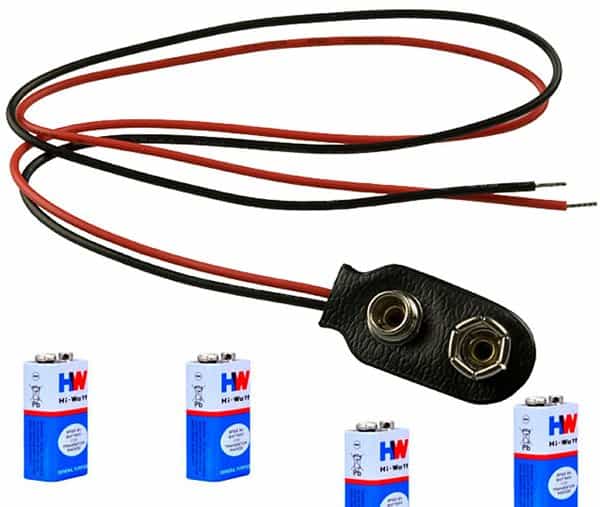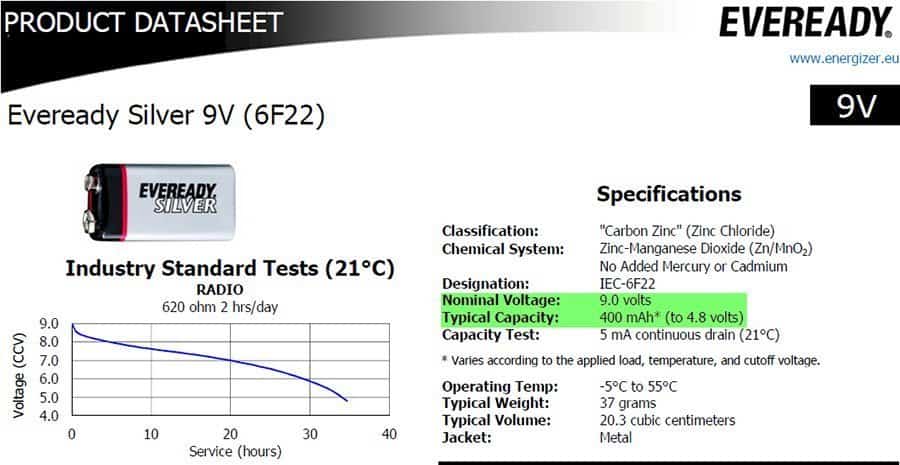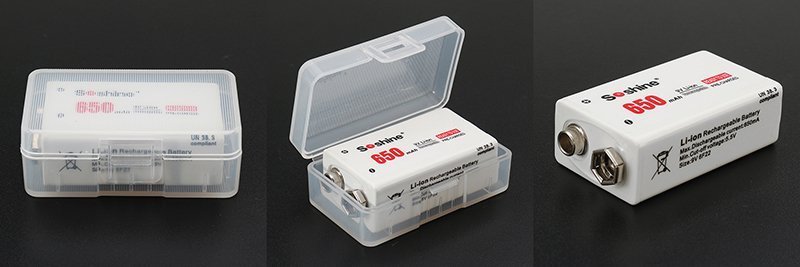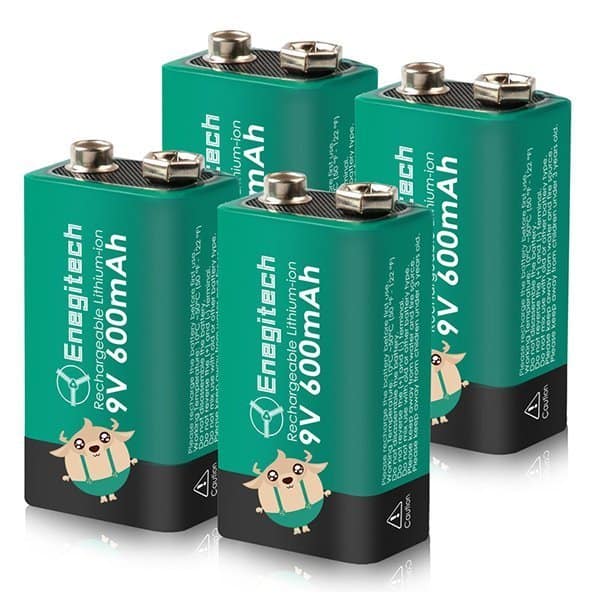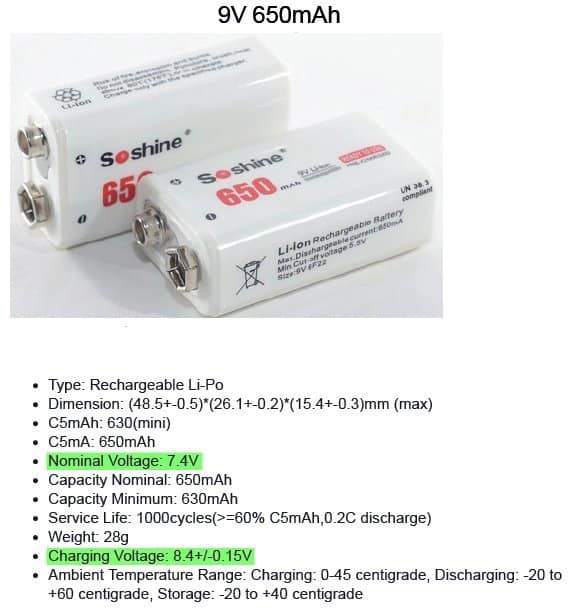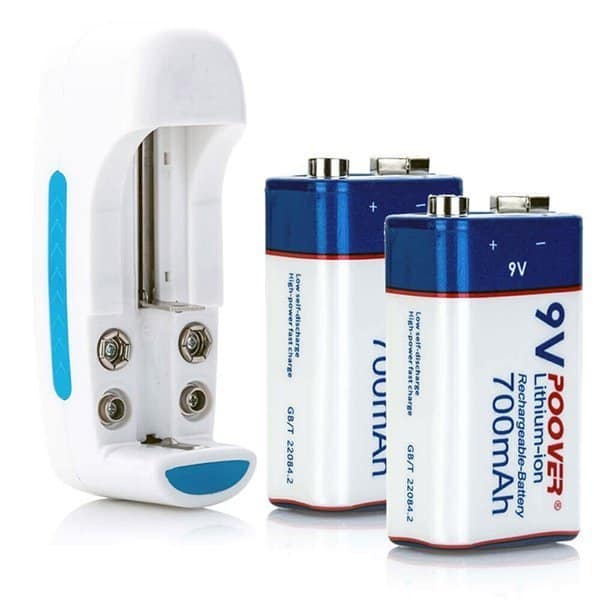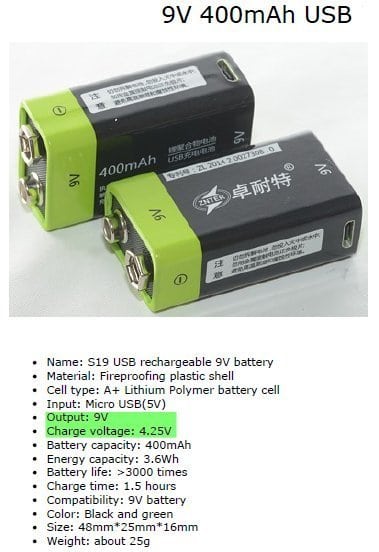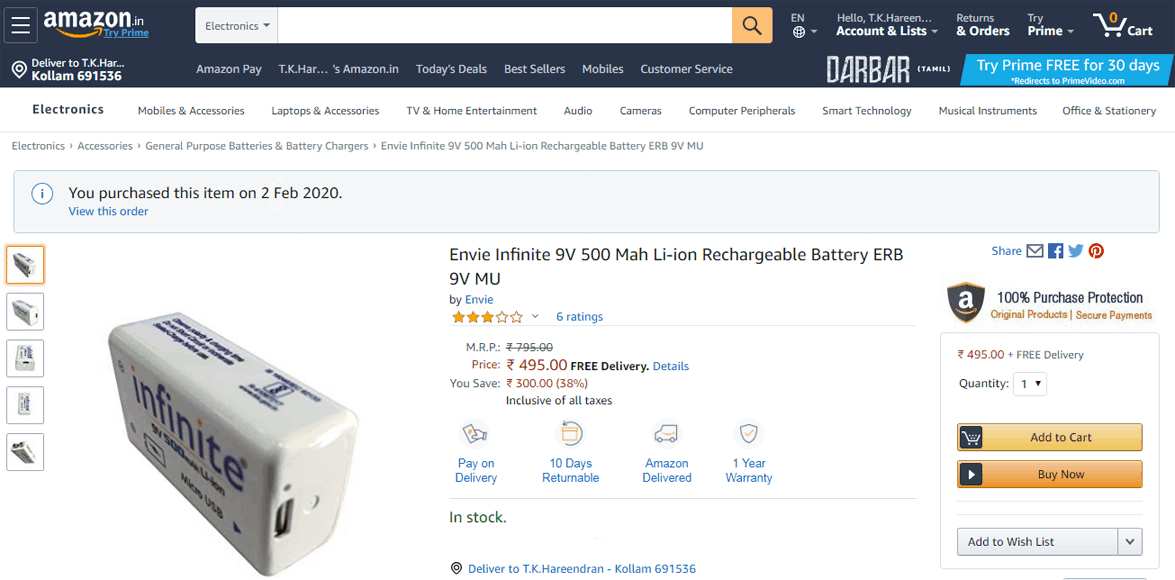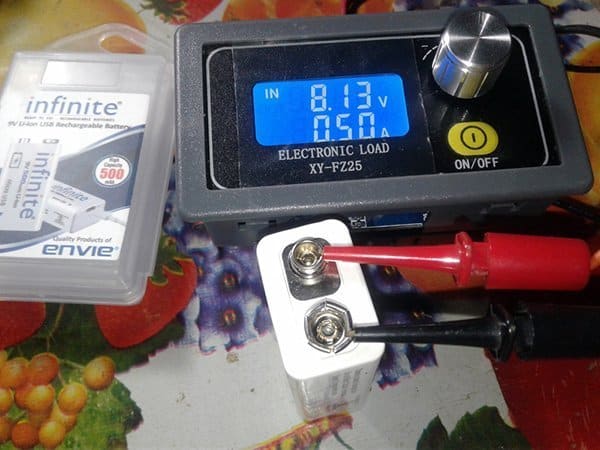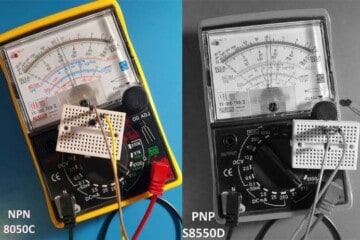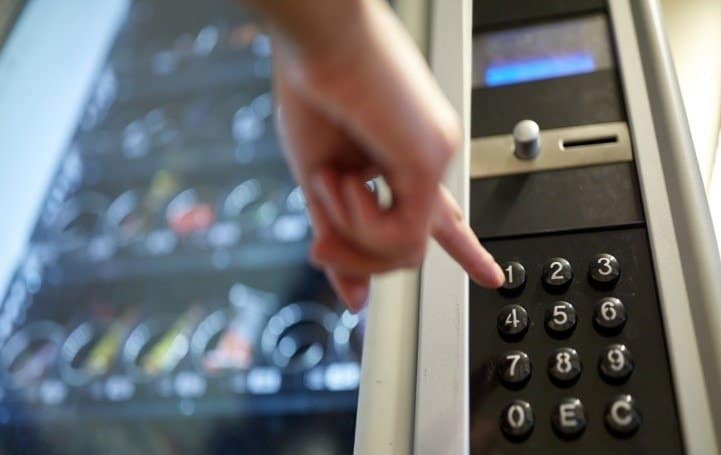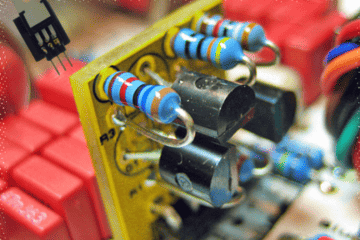The 6F22 9V battery is very popular rectangular battery quite often found in the drawer of an electronics hobbyist! Its most common names include 9V battery, 9-Volt battery, E battery, PP3 battery, 6F22 battery, MN1604 battery and similar. They can also be found in various devices at home that require slightly larger voltage from a single battery. According to IEC label, 6F22 denotes carbon-zinc battery chemistry, and its nominal capacity is 400mAh.
This is a snip from the official product datasheet of the Eveready Silver 9V (6F22) battery. As you may know, physical dimensions of the 6F22 9V (carbon-zinc) battery is 48.5mm height, 26.5mm length and 17.5mm width. Also note that, according to ANSI standard, label for the carbon-zinc battery is 1604D. The battery terminals are positioned on the same battery end: ‘+’ is male clasp, and ‘-‘ is female clasp. The clever design of the snap-style battery connector prevents casual wrong polarity insertions.
Frankly, I don’t want to rewrite the golden history of 6F22 9V battery which is very familiar to almost all guys. Then why this article? Yes, I have a good reason to share some thoughts here!
Very recently I got an assortment of rechargeable 9V batteries from an overseas source, and then I made a post on that in my Facebook page.
Instantly thereafter I got numerous requests to shed some light on the technical aspects of the rechargeable 9V editions – yes, it’s new to many people. So now I’d like to talk about something often overlooked by many.
Rechargeable 9V Battery
9V batteries can be both non-rechargeable and rechargeable batteries, featuring different battery chemistries. The non-rechargeable Lithium 9V batteries contain three 3V cells providing nominal 9V with cut-off voltage of 6V, just like Alkaline 9V batteries. Alkaline 9V batteries often contain six LR61 cells which are very similar with AAAA cells hence the IEC label 6LR61 (ANSI label 1604A). However, there are other designs as well, for example, with rectangular cells.
Nowadays, the term “Rechargeable 9V battery” simply represents a rechargeable Lithium-ion (or Lithium Polymer) battery which can (supposed to be) provide a bit more healthy 9V nominal output. Certainly, a rechargeable 9V battery (if with a very low-self discharge rate) will be a good pick for use in stand-by applications.
The 9V rechargeable batteries can be found at local or on-line stores and if required, easily ordered. But don’t be lulled in by the magical description “Rechargeable Lithium-ion 9V battery”. Personally, I am not a big fan of the common 6F22 9V battery as it needs frequent replacements, and the regular chore drains me of money. On account of the tragedy, the rechargeable edition might look like a godsend. But wait – you can see many strange faces there in the crowd!
Just to exemplify, I’m giving a snip from the datasheet of a rechargeable lithium-ion 9V battery:
Now you can see that the nominal output voltage is 7.4V, and the charging voltage is 8.4V. It’s quite natural and as expected – these rechargeable lithium-ion batteries have two 1S (3.7V) Lithium cells inside. Mostly, many manufacturers make 9V rechargeable batteries using lithium-ion or lithium-polymer cells, perhaps with a flake of electronics to provide enough under/over voltage protection. However, some other 9V rechargeable batteries have only one 1S (3.7V) Li-Ion or LiPo cell inside. The available 3.7VDC input is converted to 9VDC output by means of a built-in dc-dc boost converter circuitry, and there’s also an onboard charger circuitry to recharge the 1S cell from an external 5VDC/USB power supply. So, you’ll get only 7.4VDC nominal output from the first model, whereas the latter will give 9VDC output (but not always – read following reports).
Look below to know the inside of a 9V rechargeable battery. In the image (borrowed from web) you can see two series-connected 1S LiPo cells with the protection circuit between. The key chips soldered on the small PCB are 3YC9 (Dual Li-Ion protection), and 3V451K (Dual mosfet). Thanks to https://lygte-info.dk
This warns us that we should only use the specific battery chargers recommended by the battery manufacturer while recharging 9V rechargeable batteries. Certain battery manufacturers make their chargers that are not good for charging lithium batteries of other manufacturers due to the proprietary protective mechanism incorporated in their battery. If you need good and safe rechargeable lithium battery and charger, perhaps the best option is to grab them as the combo/bundle package. For short, if you need rechargeable 9V batteries, go for the batteries/ battery charger bundle/combo of reputable brands.
In a nutshell, I have found two rechargeable 9V battery versions so far. The inside electronics of the first one is merely a protection (battery management) circuitry. The electronics of the next one consists of usb charger and battery manager circuitry (perhaps with a boost converter, too). Now to the second version – the USB rechargeable battery!
As you can see in the above specs, nominal output of the USB rechargeable battery is 9V, and the charge voltage is 4.25V (Why 4.25V? I don’t know).
Naturally, I wanted to dismantle one (or more) USB rechargeable 9V battery to see its inside electronics. As indicated previously, I got an assortment of rechargeable 9V batteries, and they’re pretty elegant. Since I didn’t like to end up with cosmetic damages to my ‘voyaged’ USB rechargeable 9V batteries, I ordered another one from Amazon India – entirely for the take down.
Note that the USB charging port is mounted at the bottom of the battery shell. As per seller’s description, any USB travel charger or power bank can be used to recharge the battery. For recharging, I decided to use a typical 5V/1A USB charger. Surprisingly, there’s a little red indicator inside the shell, visible through a small hole in the bottom, to notify about the charging state.
Since I wanted to ensure that they’re telling the truth, I measured the surface voltage of my fully-charged “Infinite” battery, and found that it’s only 8.4V not 9V. And, it dropped to about 8.1V with 500mA output load (see next figure). So, it’s utmost sure that there’s no boost converter inside the battery but it simply holds two series-connected 1S Li-Ion or LiPo cells, and a 5V to 2S Li-Ion/LiPo battery charger circuitry. Yes, all USB rechargeable 9V batteries are not 9V batteries!
In my opinion, always consider the label “9V” as the physical size/shape, not the actual output voltage of the rechargeable battery. The common 6F22 9V battery is really 9V, but a rechargeable “9V” battery might give 9V, 8.4V, 7.4V, or 7.2V output, depending on the model.
As a side note, when it comes to battery evaluation, it’s worthy to notice that the measurement of batteries is a rather complex acquisition, and many of the cheap ‘eBay’ battery testers can only give a crude indication of remaining battery charge (the cell voltage is not a useful piece of information on its own, and especially if the load isn’t assigned, a voltage reading alone doesn’t precisely signal the state of charge).
Conclusion
The simplest way to find these 9V rechargeable batteries is to do a simple Google search for “rechargeable 9 V batteries” and then to narrow down the search results by type and/or brand. Purchasing rechargeable 9V batteries through online is simple, but it is still a good practice to carefully go through the sellers listings in order to avoid picking the wrong item. The primary issue is simply deciding which rechargeable type (Ordinary or USB) is best for any given context. Well, thanks for stopping by and let me know if you have any questions!
Next project in this series: Build Your Own USB rechargeable (5V-9V-12V) Battery!

